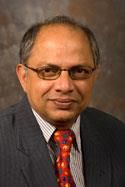Reservoir Characterization for the Next Generation
OR

Format: Virtual Webinar. 45 min. presentation followed by 15 min. Q&A
Please note that two sessions will be given at different dates listed below.
Session 1, Monday, November 11, 2019, 7 pm to 8 pm US Mountain Time
Session 2, Wednesday November 20, 2019, 9:30 pm to 10:30 pm US Mountain Time
Two live sessions are completed. Please view the videos from the recordings below. SEG members, view the course for free!
About the Course
SEG members, view the course for free!

Future advancements in subsurface characterization will require a superior integration of the multi- physics problems through modern artificial intelligence techniques and advanced statistical methods than the existing methods. From the geophysical end, isotropic and anisotropic visco-elastic prestack seismic waveform inversion need to be integrated with advanced imaging tools such as the reverse-time migration to simultaneously estimate depth images and subsurface visco-elastic properties of the P- and S-wave velocities, density, and P- and S- wave attenuations and other anisotropic properties from three- dimensional seismic data volumes. Rock-physics models for estimating lithological and fluid properties (mineralogy, fluid saturation, porosity, permeability, in-situ stress field, etc.) from these visco-elastic models, well, and core data must be developed and incorporated into a rock-physics inversion scheme under a Bayesian framework to estimate lithological and fluid properties and the associated uncertainties. The visco-elastic models from selected locations must be used to train a machine- learning system, i.e., an artificial intelligence system, for predicting the visco-elastic models and the lithological and fluid properties directly from seismic data. Finally, combining these advanced geophysics/rock physics/machine-learning tools with the reservoir simulation tools into an integrated framework for predicting the dynamic properties of the subsurface fluids and stress-fields would enable developing the reservoir characterization of the next generation.
Your Instructor

Subhashis Mallick is the SER Professor of Geophysics at the University of Wyoming, Laramie, Wyoming, USA. Before joining the academia in 2008, he worked in the oil and gas industry for several years where he worked on the development and application of full waveform seismic modeling and inversion methods. He was the Associate Editor of GEOPHYSICS during 1993-1994. He has published several research papers in peer-reviewed journals and presented his work in international conferences around the world. His current research interests include seismic anisotropy, seismic modeling, inversion, and imaging, solving multi-physics optimization problems using machine learning and its application in reservoir characterization, and carbon dioxide sequestration.
